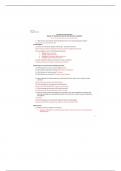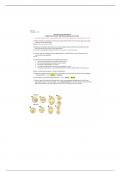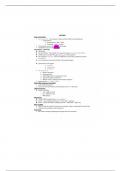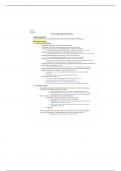Biology 102
Washington State University - Pullman Campus
All 9 results
Sort by
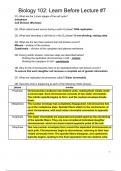
-
Biology 102 Chapter 6
- Class notes • 10 pages • 2025
-
mailiyoshimura
-
- $2.99
- + learn more
Biology 102 Chapter 6: This chapter covers cell division, explaining the stages of the cell cycle (interphase and mitosis) and the processes of mitosis and meiosis. Mitosis creates two identical cells, while meiosis forms gametes with half the chromosome number, introducing genetic variation through crossing over and independent assortment. The chapter also discusses genetic inheritance, alleles, fertilization, and the regulation of the cell cycle, highlighting how mutations can cause cancer.
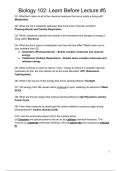
-
Biology 102 Chapter 5
- Class notes • 9 pages • 2025
-
mailiyoshimura
-
- $2.99
- + learn more
Biology 102 Chapter 5: This chapter covers metabolism, the chemical reactions within cells that include photosynthesis and cellular respiration. Photosynthesis is an anabolic process that converts sunlight into glucose, while cellular respiration is a catabolic process that breaks down glucose to produce ATP, with byproducts of CO2 and H2O. ATP is the primary energy carrier in cells, fueling processes like active transport. Metabolic pathways are facilitated by enzymes, which catalyze reactions...
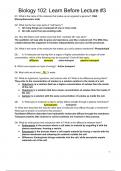
-
Biology 102 Chapter 4
- Class notes • 6 pages • 2025
-
mailiyoshimura
-
- $2.99
- + learn more
Biology 102 Chapter 4: This chapter explains cell structure and function, focusing on the differences between prokaryotic (simpler, no organelles) and eukaryotic cells (complex, with organelles like the nucleus and mitochondria). It covers key cell components, including the plasma membrane, cytoplasm, and ribosomes, and processes like diffusion, osmosis, and active transport. The chapter also discusses organelles such as the endoplasmic reticulum, Golgi apparatus, lysosomes, and vacuoles, and e...
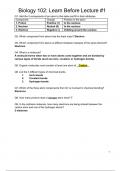
-
Biology 102 Chapter 3
- Class notes • 7 pages • 2025
-
mailiyoshimura
-
- $2.99
- + learn more
Biology 102 Chapter 3: This chapter covers the chemistry behind life, including the structure of atoms and how molecules form through ionic, covalent, and hydrogen bonds. It highlights the four major biomolecules—proteins, carbohydrates, nucleic acids, and lipids—and their roles in living organisms. The chapter also explains water's role as a solvent, the differences between acids and bases, and the importance of pH in biological systems.
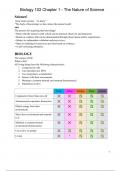
-
Biology 102 Chapter 1 & 2
- Class notes • 8 pages • 2025
-
mailiyoshimura
-
- $2.99
- + learn more
Biology 102 - Chapters 1 & 2: These chapters introduce biology as the science of life, covering the shared characteristics of living organisms, the biological hierarchy, and the scientific method for acquiring knowledge. They also emphasize scientific literacy, the ability to understand and evaluate scientific claims by assessing credibility, identifying bias, and distinguishing real science from pseudoscience. The dangers of false claims, such as the vaccines and autism controversy, highlight ...
This is a Comprehensive and detailed learn before lecture worksheet on Chapter 17; neanderthal sex(animals and huma evolution) Quality stuff!! You'll need it!!
This is a learn before lecture worksheet with answers on chapter 6; Cell division; Meiosis. Quality stuff!! You'll need it!!
This is a comprehensive and detailed note for Biol 102 with lab reports for your consumption. Quality stuff!! U'll need it!!
This is a comprehensive and detailed study guide on Exam 1 for Biol 102. Quality stuff!! You'll need it!!

How did he do that? By selling his study resources on Stuvia. Try it yourself! Discover all about earning on Stuvia



